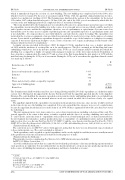Page 486 - SAIT Compendium 2016 Volume2
P. 486
IN 51 (3) Income Tax acT: InTeRPReTaTIon noTes IN 51 (3)
which it immediately began the erection of a new building. The new building was completed in October 1948, after which it was let to tenants. For the year of assessment ended 30 June 1948, the appellant claimed deductions for rates, sanitary fees and interest totalling £1 110. The Commissioner disallowed the portion of the expenditure for the period 1 December 1947 (when demolition began) to 30 June 1948 (the end of the 1948 year of assessment by which date the erection of the new building had not been completed). Price J stated the following:*
‘The items disallowed by the Commissioner were disallowed because for a proportionate period in respect of which the expenditure was incurred the building was in the course of erection and was not an asset which could be used to let and to produce income, and that the expenditure, therefore, was of a preliminary or capital nature. It seems to me clear that until the asset becomes an asset capable of producing income any expenditure upon it is of a preliminary nature and is not deductible... If a taxpayer has no asset with which he can trade then he cannot be trading. The expenditure was incurred in the creation or equipment of an asset which was intended to be used at a later stage for the purpose of earning income. It was initial or preliminary expenditure designed to extend the scope of the business or to improve its earning capacity. It was money spent in an attempt to create a source of income or to acquire an advantage for the bene t of the business which was later to be undertaken.’
A similar outcome prevailed in Borstlap v SBI.† In August 1974 the appellant in that case, a dentist, purchased erf 1456 with the intention of erecting ats on it for rental purposes. The plot contained an old dwelling and some outbuildings which were let for the rst ve months of the 1976 year of assessment at R250 a month after which the dwelling was occupied by a family of vagrants who managed to make use of the water and electricity. Demolition of these structures commenced in December 1975 and erection of the ats began during the rst quarter of 1976 with the rst ats being let during the 1978 year of assessment. During the 1976 year of assessment the appellant claimed a rental loss made up as follows:
Rental income (5 x R250)
Less:
Interest on bonds used to purchase erf 1456 Insurance
Rates
Water and electricity (while occupied by vagrants) Approval of building plans
Rental loss
RR 1 250
3 435 161 796 53 108
(4 553)
(3 303)
The Commissioner disallowed the rental loss, in so doing allowing only R1 250 of the expenditure as a deduction under section 11(a). Having lost his appeal in the Income Tax Special Court the appellant appealed directly to the Appellate Division. The court held that the amounts expended on water and electricity and building plans had to be excluded from consideration because the rst was incurred when no trade was carried on while the second was clearly of a capital nature.
The appellant argued that the expenditure was incurred in the production of income, since income would be derived in the form of rent once the building was completed. It was also argued that the expenses were not of a capital nature because the appellant already had an asset in the form of erf 1456. On these arguments Corbett JA (as he then was) stated the following:‡
‘The rst argument, in my view, runs counter to a series of previous decisions, including a decision of this court. The general approach of the courts is that where a stand is acquired with the object of erecting a building on it and to let it – and to derive an income from it – expenditure such as interest on a bond, municipal rates, etc that is incurred before the development has taken place and has produced income, is expenditure of a preliminary nature and not deductible under section 11(a) (see Income Tax Case No 697 17 SATC 93 and the cases therein cited, Income Tax Case No 736 18 SATC 207 to 209; Reef Estates Ltd v CIR 1954 (2) SA 593 (t), CIR v Allied Building Society 1963 (4) SA 1(a) at 18–19).’
(Translated from the Afrikaans.)
The court went on to cite ITC 697 (above) with approval, noting that the facts were in all material respects identical to those in the instant case. The court concluded as follows:§
‘Such expenditure can be regarded as capital expenditure and it can also rightly be said that it was not actually incurred in the production of income nor incurred exclusively for the purposes of trade.’
(Translated from the Afrikaans.)
This principle was also con rmed in Reef Estates Ltd v CIR¶ which is discussed in 4.2.1.
In ITC 1593 Heher J stated that –**
‘it is well established in our law that one cannot be involved in the performance of income-producing operations unless
such operations are underway. It is not suf cient that one has the intention to set up an income-producing operation and in the course of ful lling that intention to expend money and then to claim that as revenue’.
* At 96.
† 1981 (4) SA 836 (a), 43 SATC 195. 8 At SATC 204. ‡ At SATC 204.
§ At SATC 207.
¶ 1954 (2) SA 593 (t), 19 SATC 153.
** (1994) 57 SATC 251 (t) at 256.
478 saIT comPendIum oF Tax LegIsLaTIon VoLume 2


